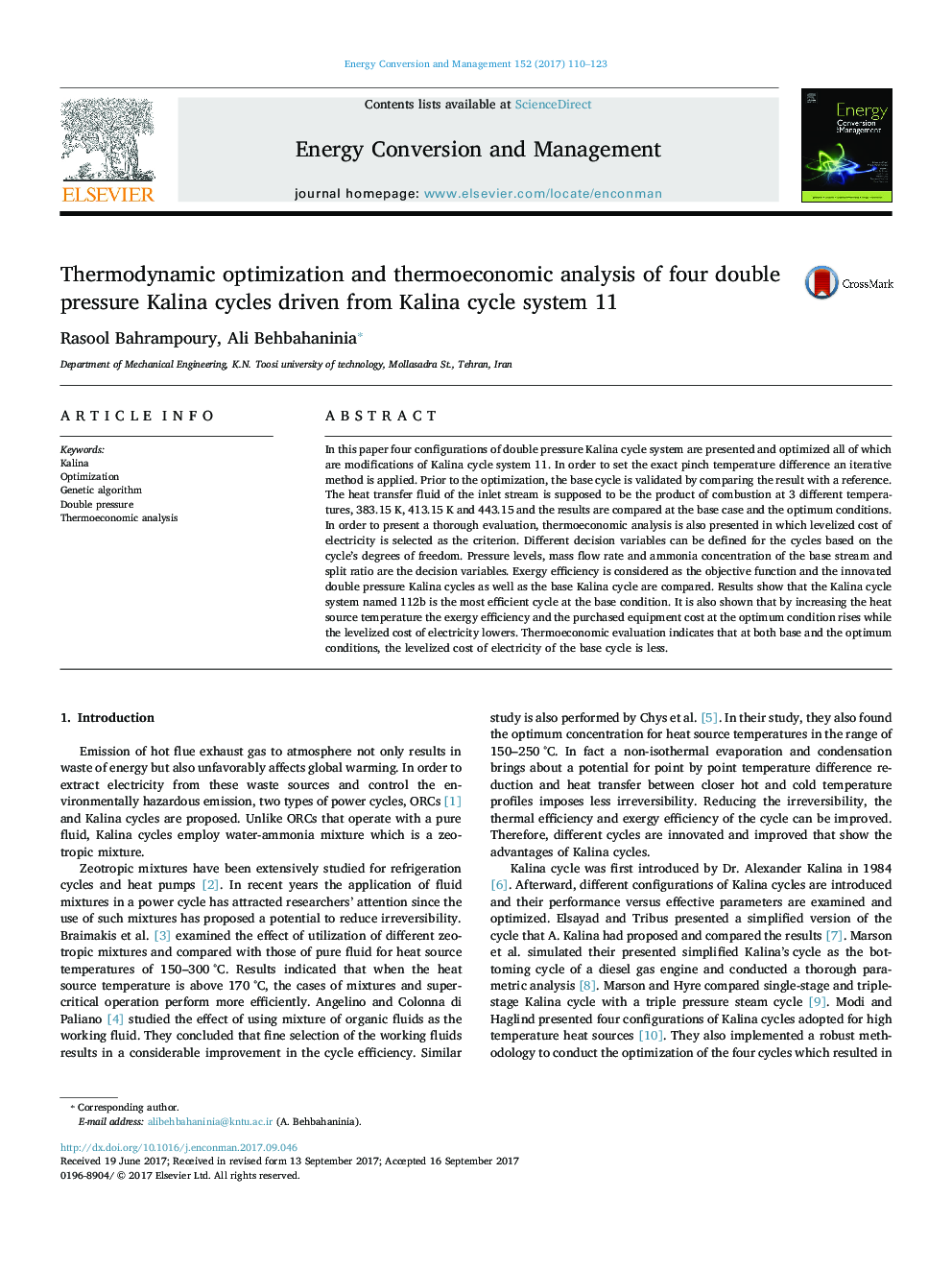| Article ID | Journal | Published Year | Pages | File Type |
|---|---|---|---|---|
| 5012309 | Energy Conversion and Management | 2017 | 14 Pages |
Abstract
In this paper four configurations of double pressure Kalina cycle system are presented and optimized all of which are modifications of Kalina cycle system 11. In order to set the exact pinch temperature difference an iterative method is applied. Prior to the optimization, the base cycle is validated by comparing the result with a reference. The heat transfer fluid of the inlet stream is supposed to be the product of combustion at 3 different temperatures, 383.15Â K, 413.15Â K and 443.15 and the results are compared at the base case and the optimum conditions. In order to present a thorough evaluation, thermoeconomic analysis is also presented in which levelized cost of electricity is selected as the criterion. Different decision variables can be defined for the cycles based on the cycle's degrees of freedom. Pressure levels, mass flow rate and ammonia concentration of the base stream and split ratio are the decision variables. Exergy efficiency is considered as the objective function and the innovated double pressure Kalina cycles as well as the base Kalina cycle are compared. Results show that the Kalina cycle system named 112b is the most efficient cycle at the base condition. It is also shown that by increasing the heat source temperature the exergy efficiency and the purchased equipment cost at the optimum condition rises while the levelized cost of electricity lowers. Thermoeconomic evaluation indicates that at both base and the optimum conditions, the levelized cost of electricity of the base cycle is less.
Related Topics
Physical Sciences and Engineering
Energy
Energy (General)
Authors
Rasool Bahrampoury, Ali Behbahaninia,
